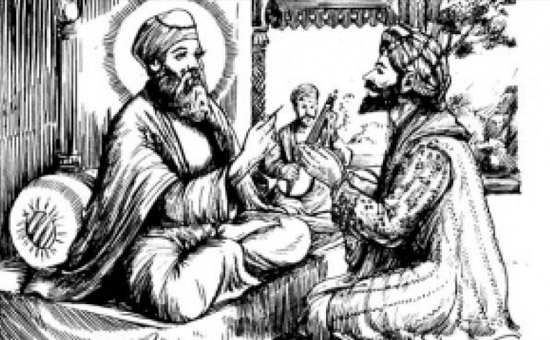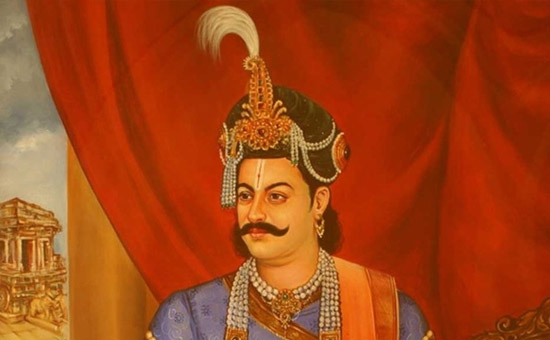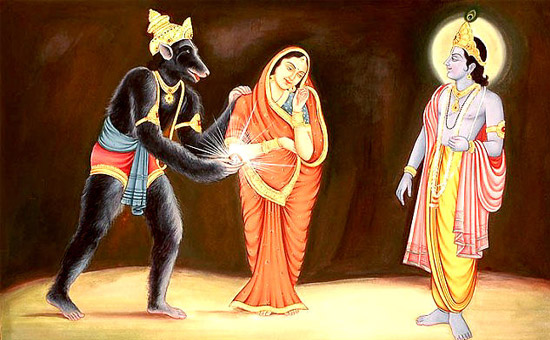- Part
twelve has stories of covers Guru Nanak and Duni Chand, Mahamantri Timmarusu
and Syamantaka Mani.
Part
One covered Guru, significance of
Ganga Saptami and Sambaji Maharaj and son of Shivaji. Part Two covered Mohini Avatar, Tiger
stories Ayyappa and Mother’s Day. Part Three tells you stories of Kamadhenu,
Sita Navami and Narasimha Jayanti. Part Four is about Buddha Purnima,
Athithi Devo Bhava and Tenzing Norgay. Part Five is about destiny-how karmas can
alter it, animal sacrifice and the power of surrender. Part Six
covers do not Wait for tomorrow, The Strange Prophecy and Know the Value of
Money. Part Seven
covers Ravana & Ma Kali, Naama-Japa and Gratitude. Part Eight
covers This Too Shall Pass, Child Freedom Fighters and Ekalavya. Part Nine
covers God proposes and disposes, stories of the brave Jassa Singh Ahulwalia
and Ganga Dussehra. Part Ten
covers Keechaka Vadh, why Tirupati Balaji is called Govinda and Sword of
Shivaji Maharaj. Part Eleven
covers Concentration, Parents and Ayachi Mishra.
This
part covers Guru Nanak and Duni Chand, Mahamantri Timmarusu and Syamantaka
Mani.
Why did I start writing these Stories?
As
a mother of three I have realized that many children are deprived of hearing
tales that are Indian in origin. This could be for various reasons, an
important one being that parents themselves do not know these tales.
The
desire to learn English and about Western Nations meant that atleast two
generations were fed tales from the West namely Sleeping Beauty, Cinderella,
etc. Because of this when you ask a child to write an essay of their favourite
character they will write about Santa Claus and Snow White but not Shivaji.
So
I took it upon myself to write short stories about India’s cultural heritage.
The stories have been written in such a way that they can be read to children.
At the same time I added snippets of our culture, rituals, shlokas, food, etc.
so that children get to know about them. Must add that these stories are not
meant to be scholarly pieces of work.
Guru Nanak and Duni Chand

Guru
Nanak travelled to far off places teaching people about the ancient wisdom of
our Bharatvarsha. He did not believe in just ritual worship without
implementing their teachings into our lives.
Once
He went to Lahore. There many people came to visit Him and listen to His
teachings. People loved to listen to His Shabads. Bhai Mardana and He would
sing them and Guru Nanak would explain them to the people.
In
Lahore, lived a very rich man by the name of Duni Chand. He came to listen to
Guru Nanak and insisted that the Guru should come to his house. Initially Guru
Nanak Sahab was reluctant since He did not care for luxuries or wealth. But
Duni Chand kept on requesting and so Guru ji went to stay at his house. While
entering Guru Nanak noticed a lot of flags outside the house.
Bhai
Mardana and Guru Nanak were fed sumptuously and given cool water to drink.
After the feast, Guru Nanak asked him, “What are the flags which are fluttering
outside your house?” With great pride Duni Chand replied, “Those flag indicate
how rich I am.”
“Every
flag represents 1 crore of Rupees. I have 7 flags fluttering outside. This
means that I have earned and have wealth of 7 crores of Rupees.” Guru Nanak
smiled and said innocently, “Then you must be a very happy person.” Duni Chand
said, “Actually I am always worried about the fact that there are many more
people who are richer than me. I would like to become the richest person in the
world.”
A
little later, Guru Nanak gave Duni Chand a small needle and said, “Duni Chand,
preserve this needle very well. Give it to me in the next world when we meet
after we die.” Duni Chand respectfully took the needle inside to keep it in his
safe. His wife noticed this and asked, “What is it?” Duni Chand said, “Guru ji
has given me a needle for safe-keeping. He wants it back in the next world when
we meet after death.”
Duni
Chand’s wife was aghast. She said, “What is wrong with you? How can you take
anything away with you when you die? Whatever is of this world remains here
only.” Duni Chand was shocked that he had not realized this so far.
He
ran to the Guru and said, “Oh Guruji, please take back Your needle. I cannot
take it with me to any world after I die. Do not make me have this debt.”
Guru
Nanak smiled and said, “Duni Chand, when you cannot take such a small needle
with you after you die, why do you store your wealth with you in such a miserly
fashion? You cannot take that with you either. You have to leave it behind when
you die. Not just that, it could even be plundered by others.”
Duni
Chand realized the truth of the Guru’s words and said, “Guru ji tell me how to
take my wealth with me after I die? What should I do of this wealth?” Guru
Nanak replied, “Distribute it wisely among the poor and needy. Do not let
anyone go empty handed from your house. Feed the hungry, clothe the poor. When
you honest earn wealth and then generously give it away as ‘Daan’ and ‘Bhiksha’
you will be taking it away with you even after your death.”
Duni
Chand was a changed man. He established many institutions and helped the needy
and the poor from then on.
Guru
Nanak uttered the following Shabad on the occasion:
False are kings, false their subjects,
false the whole world;
False are mansions, false palaces, false those who dwell therein;
False is gold, false silver, false he who weareth them
False the body, false raiment, false peerless beauty;
False husbands, false wives; they pine away and become dust.
Man who is false loveth what is false, and forgeteth the Creator.
With whom contract friendship? The whole world passeth away.
False is sweetness, false honey, in falsehood shiploads are drowned--
Nanak humbly asserteth--Except Thee, O God, everything is thoroughly false.
(Sri
Guru Granth Sahib Ji, Slok Mahala 1, Asa Ki Var, Ang 468. – taken from the Net.)
MAHAMANTRI TIMMARUSU

Saluva
Timmarusu or Saluva Nayaka or simply Timmarusu was Prime Minister of Krishna Deva Raya of
the Vijayanagar Empire. He was wise and had a very sharp mind. He came from a
very poor Brahmin family. A very interesting tale of his life is how he was
selected to be the minister of the King of that land.
The
old minister of Vijayanagara Samrajya had served the kingdom very well. But he
was becoming very feeble and was unable to attend to the affairs of the kingdom
as well as he did in the past. He knew that he could not retire until he had
selected his successor and trained him well.
So
he put forward a test – he drew a long line on a piece of paper and sent it
around the kingdom. The condition for selecting the minister was that anyone
who could make that line shorter, without cutting it or erasing it or changing
any part of it, would become the new minister.
The
king’s attendants took that piece of paper all over the country. They showed to
everyone, irrespective of caste, creed, age or status. But whoever saw the line
wondered how to make it short without erasing it or cutting it off. The puzzle
flummoxed everyone.
One
day the attendants reached a small ‘paathshala’ in a small village. They took
it to the Acharya and told him about the condition and selection of the future
minister of the King. The teacher scratched his head and try as he might, he
could not find the solution. Then the attendants said, “Allow us to show it to
your students also. Maybe they will find a solution to it.”
The
teacher smirked that if no one in the country could solve it, how could these
children solve it. But what he did not know was that there was a rare jewel in
his school – Timmarusu. Timmarusu saw the paper and immediately said, “I can
solve this.”
The
attendants then gave him the paper and the boy just took up a pencil and drew a
longer line next to the line on the sheet. Thus, with great common sense,
Timmarusu came up with a solution which was non-destructive and brilliant.
He
was selected to be the next minister and was trained for the job. He became one
of the finest ministers of Vijayanagara Samrajya. He was responsible for the
crowning of Krishnadeva Raya as the king of the Vijayanagar Empire.
But
he was very unfortunate. When Krishnadeva Raya’s son died due to poisoning, he
was falsely accused of the same. He was jailed. When the king came to know that
it was a false accusation, Timmarusu was released. After that he did not serve
the king even though the king sought his forgiveness. He went to Tirupati and
lived there as a simple bhakt – full of devotion and with no desire for money
or fame.
Venkataramana Govinda, Srinivasa Govinda
Sankataharana Govinda, Srinivasa Govinda
SYAMANTAKA MANI

On
Ganesh Chaturti day it is forbidden to see the Moon. But what if you see it by
mistake? Is there any way to atone for this? Yes … if one reads the following
story of the Syamantaka Mani, it is believed that it is ‘parihara’ for this
mistake of ours. You will be surprised to know that Sri Krishna also saw the
Moon by mistake on Ganesh Chaturti day, because of which He was accused of
having stolen a precious jewel! The following story is about this ‘leela’ of
Sri Krishna…
King
Satrajit was a very great devotee of Surya, the Sun God. Once, Surya Bhagwan
appeared in front of him and gave him the precious Syamantaka Mani and told him
that the jewel will give him eight ‘bharas’ of gold daily. Satrajit continued
worshiping Surya and kept the jewel very carefully. Once, when Sri Krishna had
come to his palace, He jokingly told Satrajit to give Him the jewel for a few
days. Of course King Satrajit refused to part with the jewel.
Many
days later, Satrajit’s brother Prasena wore the jewel around his neck and went
to the jungle to hunt. There, unfortunately, a lion pounced upon Prasena,
killed him and ate him up. But it kept the shining jewel close to it.
Jambavanta, the bear who had fought beside Sri Rama in defeating Ravana, saw
the lion with the jewel. He knew instantly that it must be a special jewel. He
fought with the lion, killed it and succeeded in getting it to his cave.
In
the meantime, in Satrajit’s kingdom there were discussions on the missing
Prince and Syamantaka. Many rumours were floated that it was Sri Krishna who
had an eye on the Jewel and it was possible that He had stolen the Mani and
killed Prasena for it. These rumours reached Sri Krishna too and He was aghast.
He decided to go to the forest where Prasena had been to and try and locate the
Mani.
In
the forest He saw the torn clothes of the Prince and the dead body of the lion.
He understood immediately what must have happened. Then He saw some other
footprints and decided to follow them. He landed up at the cave of Jambavanta
and there he saw the Syamantaka Mani tied on top of a little cradle. A
beautiful girl was singing to the baby in the cradle. When she saw Sri Krishna,
she let out a cry.
Jambavanta
came out and saw Sri Krishna and when Sri Krishna asked him for permission to
take away the jewel, he pounced on Sri Krishna. They fought for many days and
finally Sri Krishna managed to throw Jambavanta on the ground. When Jambavanta
saw Sri Krishna’s feet, he thought they were his Prabhu Sri Rama’s feet. He
touched them and started shedding tears of happiness on having seen his Prabhu
again.
Sri
Krishna hugged him and reminded him of his desire to fight with Sri Rama once.
Sri Rama had promised him that he would do so in His next life and that vow was
fulfilled by Sri Krishna. Jambavan then asked Sri Krishna to accept Jambavati,
his daughter, as His wife. Sri Krishna and Jambavati were married to each other
and they returned to Satrajit’s kingdom to return the Syamantaka Mani.
There,
Satrajit felt very apologetic that he had accused Sri Krishna wrongly. He then
proposed that Sri Krishna accept his daughter Satyabhama as his wife. Sri
Krishna was married off to Satyabhama with great pomp and pageantry.
(Unfortunately,
the jewel did not remain safe with Satrajit even later. Akrura and Kritavarma
instigated Satadhanvu to steal it. He killed Satrajit for the jewel. Again Sri
Krishna and Balarama went out to punish the criminals and Satadhanvu was killed
by Sri Krishna. Before he died, Satadhanvu had given the jewel to Akrura and
Balarama killed Akrura and recovered the jewel. After this Sri Krishna
requested Surya Bhagwan to take back the jewel.)
Note:
Reading this, reciting this, listening to this story absolves one of the sin of
seeing the Moon on Ganesh Chaturti day. It also reminds one that no one should
be blamed or accused falsely, without having any proof of the crime.
Prabhu Anant, Prabhu Katha Anantha …
Author is a mother to three children and writes
on Spirituality, Women Empowerment and National Affairs. Her articles are
published on Indusscrolls.com amongst others. She believes in the cause of the
Indian Breed of Cows and is a follower of Shree Ramachandrapura Matha,
Karnataka.
To read all articles
by author.